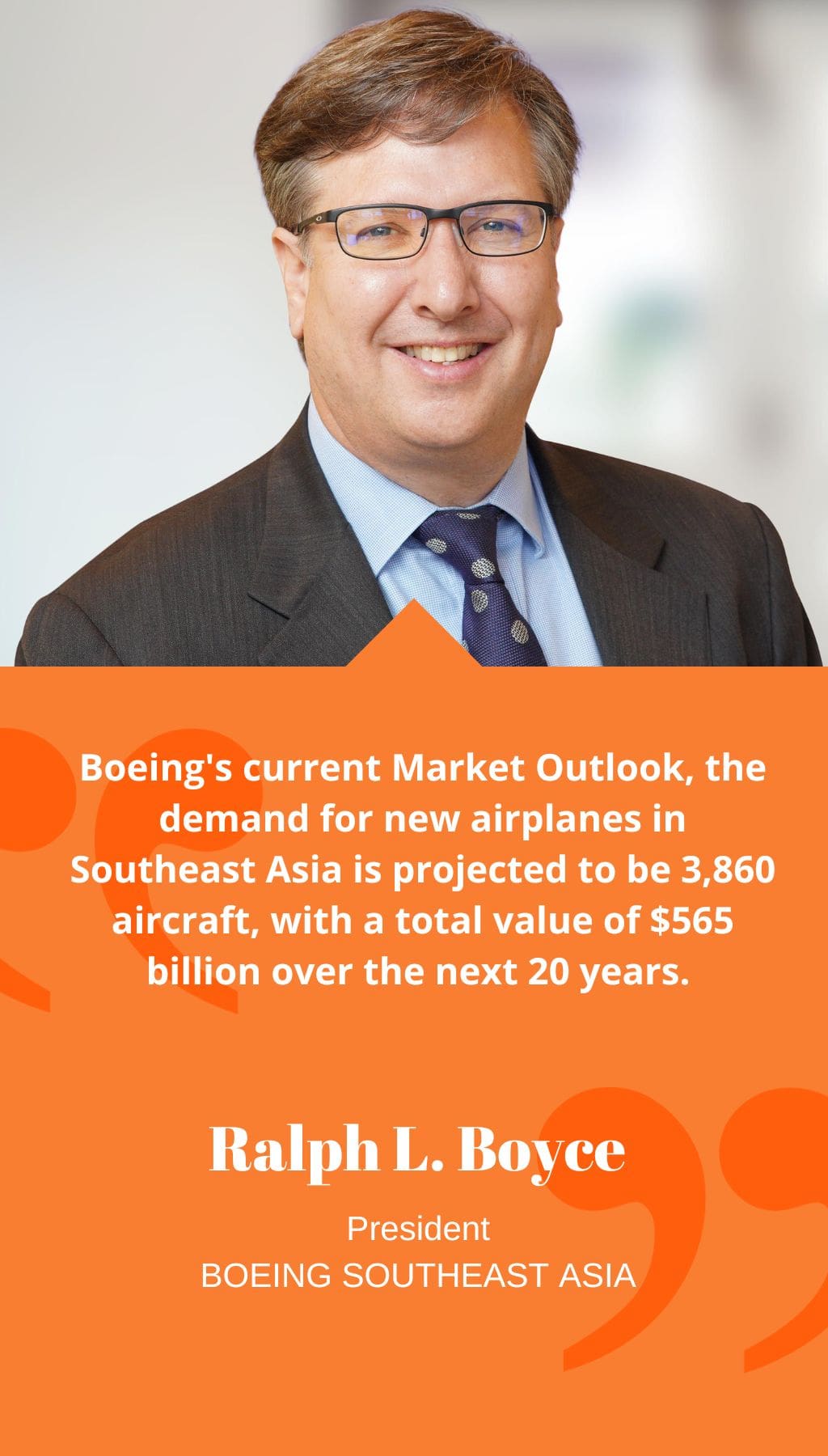
- Singapore | 27 March 2019

Could you provide a brief overview of Boeing Singapore and outline a few country highlights?
Boeing has a longstanding partnership of 70 years with Singapore and employs approximately 350 people in the island state. Singapore serves as Boeing’s Southeast Asia headquarters, where operations encompass a wide range of activities, including commercial aircraft and defense procurement, services support, training, and advanced research collaboration with the public and private sectors. Some key highlights in recent years include SilkAir taking delivery of its first 737 MAX aircraft in 2017. SilkAir, the regional wing of Singapore Airlines, has been transitioning to an all-Boeing fleet since it received its first Next-Generation 737-800 in 2014. Singapore Airlines, another prominent customer, is set to receive the very first 787-10 in 2018, as part of its order for 30 787-10s. Scoot, the long-haul low-cost subsidiary of the Singapore Airlines Group, has also taken delivery of its first 787-9 in 2015 and has plans to eventually add 20 Dreamliners to its fleet. The 787 family of aircraft, known for their unparalleled fuel efficiency and range, has enabled the opening of over 120 new nonstop routes since entering service in 2011 and currently operates on more than 530 routes worldwide. Additionally, Boeing Asia Pacific Aviation Services, a joint venture between Boeing (51%) and SIA Engineering Company (49%), provides industry-leading engineering, repair, and maintenance services for Boeing airplanes in the region. Another significant highlight was the Singapore Ministry of Defense’s announcement of awarding a contract to Boeing for the acquisition of CH-47F Heavy Lift Helicopters, also known as Chinooks.
What are some of Boeing’s projections for the demand for aircraft and professional personnel in Southeast Asia in the next few decades?
Boeing’s current Market Outlook, the demand for new airplanes in Southeast Asia is projected to be 3,860 aircraft, with a total value of $565 billion over the next 20 years. The majority of the demand (over 75%) will be for single-aisle airplanes, driven by the increasing number of low-cost carriers and strong annual traffic growth rates of 6.4% for Southeast Asia. In addition to the demand for aircraft, Boeing forecasts a need for 248,000 new commercial airline pilots and 268,000 new technicians in the Asia-Pacific region over the next two decades. China is expected to lead the region in demand, with a requirement for 111,000 pilots and 119,000 technicians, followed by Southeast Asia with 62,000 pilots and 67,000 technicians. To support the growing demand for skilled aviation professionals, Boeing’s Flight Services Singapore campus, which is the company’s largest aviation training facility in Asia, has the capacity to train up to 6,000 airline pilots and technicians annually. The campus currently houses six 737, 777, and 787 aircraft type simulators, with plans to add more simulators in 2017.
Could you describe Boeing’s presence within the space exploration industry segment?
Boeing is currently involved in building NASA’s latest spaceflight system, the Crew Space Transportation (CST)-100 Starliner spacecraft, which is designed to transport crew to and from the International Space Station (ISS). This global endeavor involves the collaboration of 15 nations that work together on the ISS, and NASA continues to seek additional future partners. Boeing believes that the future of human deep space exploration, including endeavors such as putting humans on Mars, will require a global effort, and the involvement of as many countries as possible will be beneficial.
Can you tell us about the Economic Development Board of Singapore’s push for implementing robotics and automation within the aerospace industry?
Yes, the Economic Development Board of Singapore has been focusing on the implementation of robotics and automation within the aerospace industry.
How is Boeing contributing to this effort?
As the largest aerospace company in the world, Boeing is committed to utilizing new technologies and implementing robotics and automation innovations. We strongly believe that advanced manufacturing supports our competitiveness by enabling higher and more efficient aircraft production rates, as well as reducing flow time and improving first-pass quality. The investment in advanced technology helps us increase our capacity to build more airplanes.
One example of our efforts is the highly automated wing skin panel production system, called the Panel Assembly Line, on the 737 program. This system consolidates assembly into an in-line flow using a pulsing line. In Singapore, we work closely with the Agency for Science, Technology and Research (A*STAR) on research projects of mutual interests in manufacturing automation, defect inspection, maintenance, and materials development.
Can you elaborate on your belief in finding the right balance between automation, robotics, and manpower?
Certainly. While we are committed to implementing advanced technology, we believe in finding the right balance between automation, robotics, and manpower. This is crucial in ensuring that we maximize the benefits of advanced technology while also supporting our workforce. At Boeing, we understand that our people are our greatest asset and we aim to support them while achieving our goals of increased productivity and efficiency.














